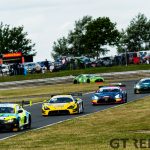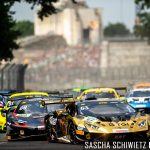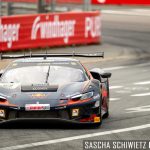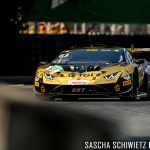The second free practice session (FP2) for the 2025 FIA World Endurance Championship’s 6 Hours of Imola delivered a rare spectacle at the Autodromo Enzo e Dino Ferrari, as Ferrari and BMW posted identical lap times of 1:31.040 in the Hypercar class, with Ferrari taking top honors due to an earlier lap. In LMGT3, Akkodis ASP Team’s Lexus duo dominated, underscoring their resurgence. With a fully dry track, FP2 offered critical insights into pace, consistency, and strategic setups. Let’s analyze the data and unpack the key moments that defined this electrifying session.
Hypercar: A Historic Tie at the Top
Ferrari and BMW’s Identical Pace
In a remarkable twist, Antonio Giovinazzi in the #51 Ferrari AF Corse 499P Hypercar and Dries Vanthoor in the #15 BMW M Hybrid V8 both clocked a 1:31.040, marking only the second time in FIA WEC history that two cars have shared the same lap time in a session. Ferrari claimed the top spot as Giovinazzi set his time earlier (lap 26, 16:46:58.054) compared to Vanthoor’s (lap 35, 17:11:24.058). Giovinazzi’s lap featured sector times of 18.848s (S1), 29.865s (S2), and 42.327s (S3), with a top speed of 311.2 km/h, showcasing Ferrari’s balance on Imola’s high-speed layout.

Alpine’s Strong Showing
Mick Schumacher powered the #36 Alpine Endurance Team A424 to third with a 1:31.283 (lap 42, 17:26:52.293), just 0.243 seconds off the pace. His sector times (18.803s S1, 29.904s S2, 42.576s S3) and top speed of 309.5 km/h highlight Alpine’s competitiveness, particularly in S1, where Schumacher was among the fastest. This performance signals Alpine’s potential to challenge for a podium in qualifying or the race.
Top Six Rundown
The #50 Ferrari, which led FP1, secured fourth with Antonio Fuoco’s 1:31.394 (lap 26, 16:52:04.466), trailing by 0.354 seconds. Fuoco’s consistency was evident, with a strong S2 (29.873s). The #20 BMW, driven by Robin Frijns, took fifth with a 1:31.428 (lap 39, 17:15:37.159), while Sébastien Bourdais in the #38 Cadillac V-Series.R rounded out the top six with a 1:31.614 (lap 29, 17:00:27.167). The tight spread—0.574 seconds separating the top six—foreshadows a fierce qualifying battle.
Sector Analysis and Strategic Insights
The data reveals distinct strengths across teams. Ferrari’s #51 excelled in S3 (42.327s), suggesting superior traction out of Imola’s slower corners. BMW’s #15 matched Ferrari’s pace but was marginally slower in S1 (18.896s), indicating a setup favoring mid-sector speed (29.836s S2). Alpine’s S1 performance (18.803s) points to strong braking and turn-in, critical for overtaking at Tamburello. Teams likely focused on long-run simulations, as evidenced by consistent lap times over multiple stints (e.g., Giovinazzi’s 10-lap average of 1:31.8), preparing for the six-hour race where tire management and fuel efficiency will be key.
Interesting Fact: Peugeot’s Sector Prowess
A standout from the data is the #94 Peugeot TotalEnergies Hypercar, driven by Malthe Jakobsen. While finishing outside the top six with a best lap of 1:33.028 (lap 31, 17:01:39.705), Jakobsen posted the session’s fastest S1 time of 18.989s. This suggests Peugeot has optimized its setup for Imola’s high-speed opening sector, potentially giving them an edge in qualifying if they can improve S2 and S3 consistency.
LMGT3: Lexus Dominates, BMW and Ferrari Chase

Akkodis ASP’s Lexus One-Two
Clemens Schmid set the LMGT3 pace in the #87 Akkodis ASP Team Lexus RC F LMGT3 with a 1:42.944 (lap 28, 16:54:33.573), edging out teammate Finn Gehrsitz in the #78 Lexus by 0.119 seconds (1:43.063, lap 30, 17:00:07.199). Schmid’s lap included sector times of 21.498s (S1), 33.734s (S2), and 47.712s (S3), with a top speed of 260.9 km/h. The Lexus duo’s dominance reflects the team’s improved form in 2025, though a podium remains elusive for Jérôme Policand’s outfit.
BMW and Ferrari in Pursuit
Kelvin van der Linde in the #46 Team WRT BMW M4 LMGT3 EVO secured third with a 1:43.142 (lap 31, 17:00:45.762), 0.198 seconds off Schmid’s pace. His S2 time of 33.497s was the fastest in the class, highlighting BMW’s strength in Imola’s technical middle sector. Alessio Rovera’s #21 Vista AF Corse Ferrari 296 LMGT3 took fourth with a 1:43.279 (lap 29, 16:58:30.858), followed by Ben Tuck in the #77 Proton Competition Ford Mustang (1:43.387, lap 27, 16:52:43.043) and Riccardo Pera in the #92 Manthey 1st Phorm Porsche (1:43.480, lap 35, 17:05:26.165).

Sector Breakdown
The LMGT3 data underscores the importance of sector optimization. Lexus’s #87 shone in S1 (21.498s), suggesting excellent braking stability, while BMW’s #46 dominated S2 (33.497s), indicating superior cornering speed. Ferrari’s #21 was competitive in S3 (47.863s), pointing to strong traction. The tight margins—0.536 seconds across the top six—highlight the class’s competitiveness, where setup tweaks could make a significant difference in qualifying.
Unexpected Highlight: McLaren’s Consistency
The #95 United Autosports McLaren, driven by Sean Gelael, delivered a quietly impressive performance. Gelael’s best lap of 1:43.480 (lap 11, 16:22:23.033) matched the #92 Porsche’s time, with a standout S3 time of 47.863s. His consistency across 10 laps (average 1:45.1) suggests the McLaren could be a contender in the race, particularly if tire wear becomes a factor.
Key Observations and Race Implications
Driver Consistency and Long Runs
The data highlights driver adaptability in dry conditions. Giovinazzi’s #51 Ferrari maintained a 1:31.5 average over 12 laps, with minimal degradation, signaling race-ready pace. In LMGT3, Schmid’s #87 Lexus averaged 1:43.2 over eight laps, showcasing consistency crucial for the six-hour endurance. Teams likely used FP2 to simulate race stints, as seen in the #36 Alpine’s 15-lap run with Schumacher, averaging 1:32.3.
Pit Stop Efficiency
Pit stop data offers strategic clues. The #009 Aston Martin Thor Team Hypercar recorded a pit time of 1:35.062 (lap 21, 16:38:16.185), among the quickest, indicating efficient crew work. In contrast, the #007 Aston Martin’s 10:17.376 stop (lap 22, 16:50:48.902) suggests a driver change or setup tweak. In LMGT3, the #95 McLaren’s 1:22.009 stop (lap 34, 17:11:22.908) was notably fast, a potential advantage in a race where pit strategy could decide positions.
Setup Optimization

The dry conditions allowed teams to refine setups for qualifying and race pace. Ferrari’s #51 and BMW’s #15 likely prioritized aerodynamic balance, given their identical lap times and high top speeds (311.2 km/h and 310.3 km/h, respectively). In LMGT3, Lexus’s S1 strength suggests a setup favoring front-end grip, while BMW’s S2 dominance points to mid-corner stability. Teams will use FP3 to fine-tune these setups, particularly for qualifying, where sector times could determine grid positions.
Conclusion
FP2 at Imola was a thrilling showcase of precision and competition, with Ferrari and BMW’s identical Hypercar times stealing the headlines and Lexus asserting dominance in LMGT3. The data reveals a session defined by tight margins, sector-specific strengths, and strategic long-run preparations. Standout performances from Alpine’s Schumacher and Peugeot’s Jakobsen hint at potential surprises, while McLaren’s consistency in LMGT3 adds intrigue. As teams head into the final practice session at 10:40 CET on Saturday, the focus will be on optimizing setups and strategies for qualifying and the grueling 6 Hours of Imola. With 36 entries and 13 manufacturers, the stage is set for an unforgettable race weekend.
Stay tuned for more updates from the 2025 FIA WEC at Imola!
Love what we do? Support GT REPORT with a donation and fuel our next trip to the racetrack.
Even €5 makes a difference!


















